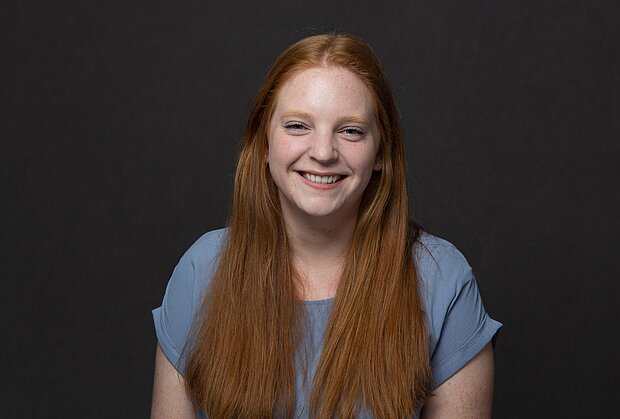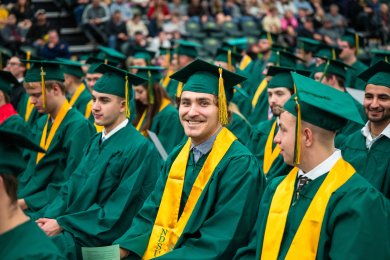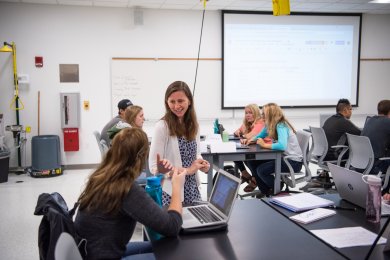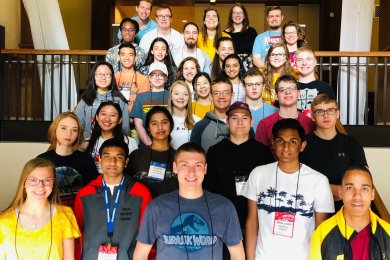
Breeya Pederson, above, recently became the first student to complete NDSU's agriculture and biosystems engineering accelerated master's degree program.
Breeya Pederson is the first NDSU student to complete the agricultural and biosystems engineering accelerated master’s degree program.
Through the accelerated program, the duration to receive a master’s degree is shortened due to the double counts of the courses, while the total required courses did not change. The difference is between one year for the accelerated program and two to three years for the traditional master’s degree, according to Xinhua Jia, who is the committee chair for the Bachelor of Science accelerated master’s program.
Pederson was impressed with her initial tour at NDSU, which was led by engineering ambassador students.
“I loved my tour. They let us walk through the department. My undergrad advisor, Dr. Jia, was there, and she was thrilled to have a girl in the group,” said Pederson, who is from Shoreview, Minnesota. “I really wanted to go into engineering, then I saw the lab and saw what we would be doing in classes with the hands-on work with machinery and I really wanted to be doing that instead of all desk work.”
Pederson completed her bachelor’s degree in agricultural engineering, with a focus in power machinery, then started the accelerated program the last semester of her final undergraduate year.
“I had one semester of both undergrad and graduate classes,” she said.
Her master’s degree also is in agricultural engineering, with a focus in precision agriculture.
She decided to pursue her master’s while on campus so she could be involved in research.
Pederson’s project was working toward an autonomous WeedBot. She completed statistical analysis to determine the relationship between the laser intensity of a sensor and the distance traveled to see if sensor placement affects the end results.
With the accelerated program, she completed her master’s in one and a half years.
“It allows you to start the coursework and get acclimated with the research team before you actually start the research project,” Pederson said.
By the time she started the research project, she had less coursework to complete, so she could focus on the research. Other benefits include more career opportunities.
“The graduate courses are more advanced and the research project gives them more experience on project management, which potentially lets them move up to higher levels easily in the future,” Jia said.
As the first student through the program, Pederson appreciated the flexibility offered to her. She encourages others to pursue the program.
“The department was fantastic, always has been, but really helpful for this, too,” Pederson said. “You can take another year and you get to work on fun research projects and you get to meet more people.”
Employed at AGCO in Jackson, Minnesota, as a rotational engineer, Pederson is now working with continuous improvement and manufacturing, then will rotate to a new position in two months. She will complete five jobs in two years, gaining experience throughout the company.
“The master’s definitely helped. It was a slight pay raise and it also helped me stand out from the other interns,” Pederson said. “There is a difference in learning between an undergrad and master’s program. It’s a very different mindset that you acquire.”
Pederson says she is also excited about her future as an engineer.
“You get new challenges and it’s continuous learning,” she said. “It’s really interesting.”
As a student-focused, land-grant, research university, we serve our citizens.




